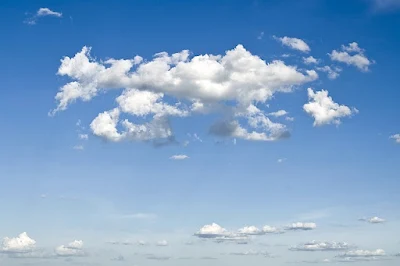Atmosphere : An Introduction
'Atmosphere' as it is clear from the name - a place made or surrounded by air. 'Atmosphere' plays an important role in the development of life on earth, in fact 'Atmosphere' is the basis of life on earth. The 'atmosphere' allows short solar radiation to reach the earth's surface like a glass house, but absorbs the long waves radiating from the earth and maintains the temperature of the earth surface up to an average of 15० C, which helps in the development of organisms on the earth.
Ramosi And Moppila Rebellion - Farmer's Movement In British India
Composition of the Atmosphere : Key Points
- The maximum upper limit of the 'atmosphere' is up to 10,000 km, but according to Strahler, 97% - 99% of the atmosphere is found up to a height of 29 km - 32 km.
- Atmosphere is a mixture of many gases. In addition to gases, water vapor, dust particles, smoke, salt particles, etc. are found in different proportions. The main gases found in the atmosphere and their percentage are as follows –
- Nitrogen – 78.80%
- Oxygen – 20.95%
- Argon – 0.93%
- Carbon dioxide – 0.036%
- Nianan – 0.002%
- Helium – 0.0005%
- Krypton – 0.001%
- Jinan – 0.00009%
- Hydrogen – 0.00005%
- Ozone – 0.00006%
- The above-mentioned gases perform various functions, whose brief description is as follows –
- Oxygen is the essential life air for humans and animals on earth and with this it is essential for the process of ignition (fire).
- Nitrogen, by diluting the oxygen, controls its ignition capacity and meets the nitrogenous requirement of the plants by being transferred to the earth by the plants of the leguminous family.
- Carbon dioxide absorbs the long wave radiation reflected from the earth and keeps the atmosphere warm or maintains the average temperature of the earth.
- Ozone gas absorbs the harmful ultraviolet rays coming from the sun and protects the living beings from it. Due to the effect of ultraviolet rays, skin diseases can arise in the living beings and due to this there is an increase in the temperature.
- The gases found in the atmosphere can be divided into heavy gas and light gas –
- Heavy gases include nitrogen, oxygen and carbon dioxide, which are found in the lower orbits of the earth.
- Light gases include helium, neon, krypton, ozone, which are found in the upper orbits of the earth or at higher altitudes.
- Air made up of a mixture of different gases has weight, which exerts a pressure on the earth. This pressure is called air pressure. The air pressure at sea level is 1034 grams per square cm.
- Water vapor also conserves heat by blocking radiation like carbon dioxide and produces green house effect.
- Its quantity per unit volume in the atmosphere ranges from 0 – 4%. It is found up to 4% in tropical-humid regions while it is found up to 1% in desert and polar regions.
- 90% of the total water vapor in the atmosphere is found up to a height of 8 km, while 50% of it is found only up to a height of 2 km.
- Water vapor also absorbs some amount of insolation coming from the Sun and stores them. Thus it acts like a blanket.
- Dust particles, smoke and salt particles are mainly found in the lower orbit of the earth.
- The amount of dust particles is more in sub-tropical and temperate regions, while its quantity is less in polar and equatorial regions.
- Sea salt, fine soil, ash, pollen grains, smoke, etc. come under dust particles.
- Dust particles, smoke and salt particles attract water vapor towards themselves and act as a hygroscopic nucleus, around which water droplets are formed by condensation.
- Dust particles scatter the rays of light coming from the Sun, due to which the color of the sky appears blue, as well as due to this red and orange currents are formed in the sky at sunrise and sunset.
Layers of the Atmosphere
- On the Basis of Presence of the gases found in the atmosphere
- On the basis of various activities and events taking place in the atmosphere
1. On the Basis of Presence of the Gases Found in the Atmosphere
- If we look at the presence or composition of the gases found in the atmosphere, then we can divide the atmosphere into two parts.
- First – Symosphere - This part is also called the samosphere due to the almost uniform mixture of atmospheric gases found up to a height of 80 km from the earth.
- The troposphere, stratosphere and mesosphere of the atmosphere come under the stratosphere.
- Mainly oxygen and nitrogen are found in the stratosphere.
- Second – Heterosphere - After a height of 80 km from the earth, different molecular layers of different gases are found, such as - molecular layer of oxygen, molecular layer of nitrogen etc. Disparities are found in the chemical and physical properties of these layers, that is why this part is also called heterosphere.
- Mainly four layers of different gases are found in the heterosphere, which are as follows –
- Layer of molecular nitrogen – 90 to 200 km height.
- Molecular oxygen layer – 200 to 1100 km height.
- Helium layer - from 1100 to 3500 km height.
- Layer of molecular hydrogen – 3500 to 10,000 km height.
2. On the Basis of Various activities and Events Taking Place in the Atmosphere
- On the basis of various activities and events taking place in the atmosphere, the atmosphere has been divided into 5 different levels, which are as follows –

Comments
Post a Comment